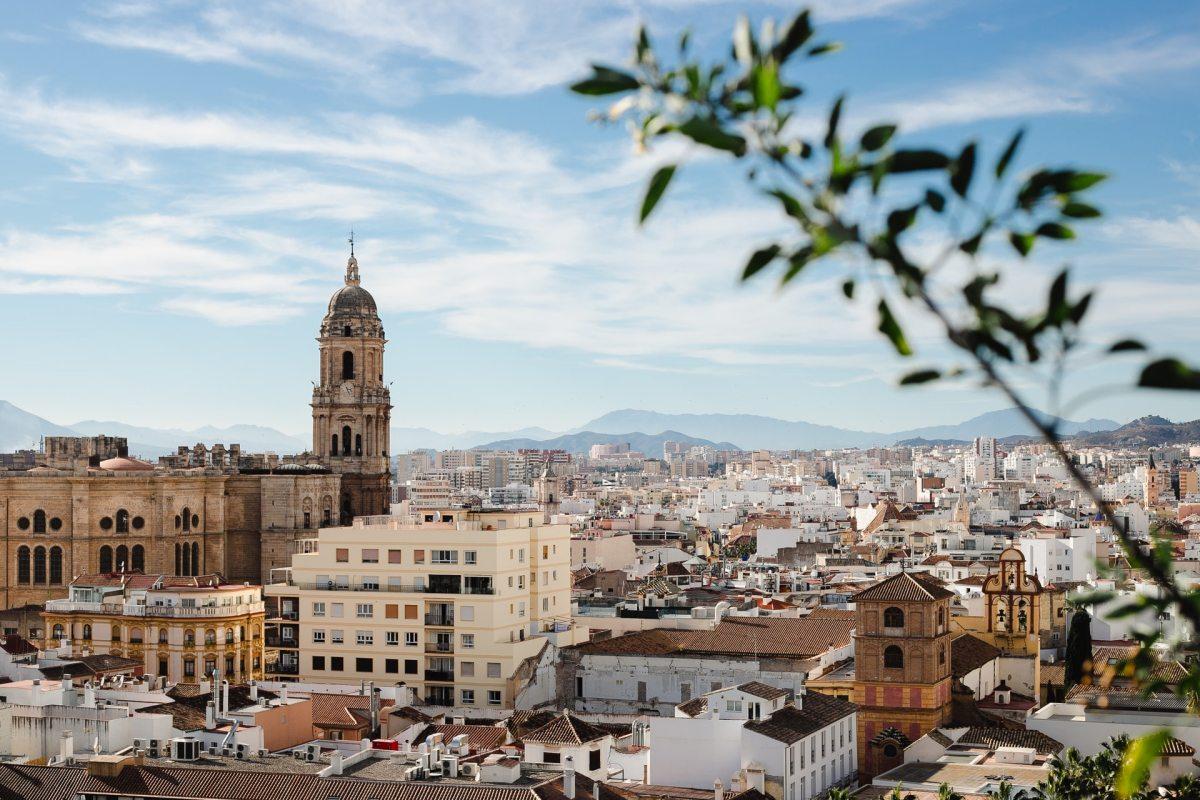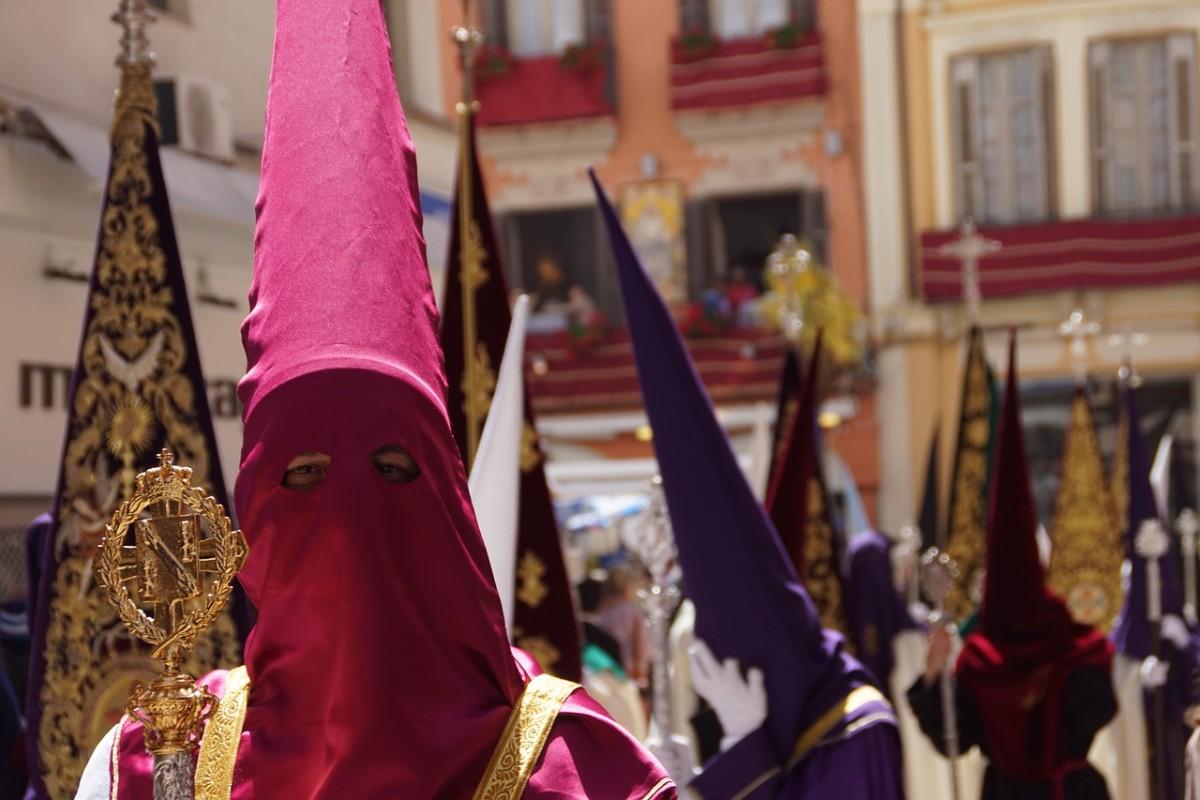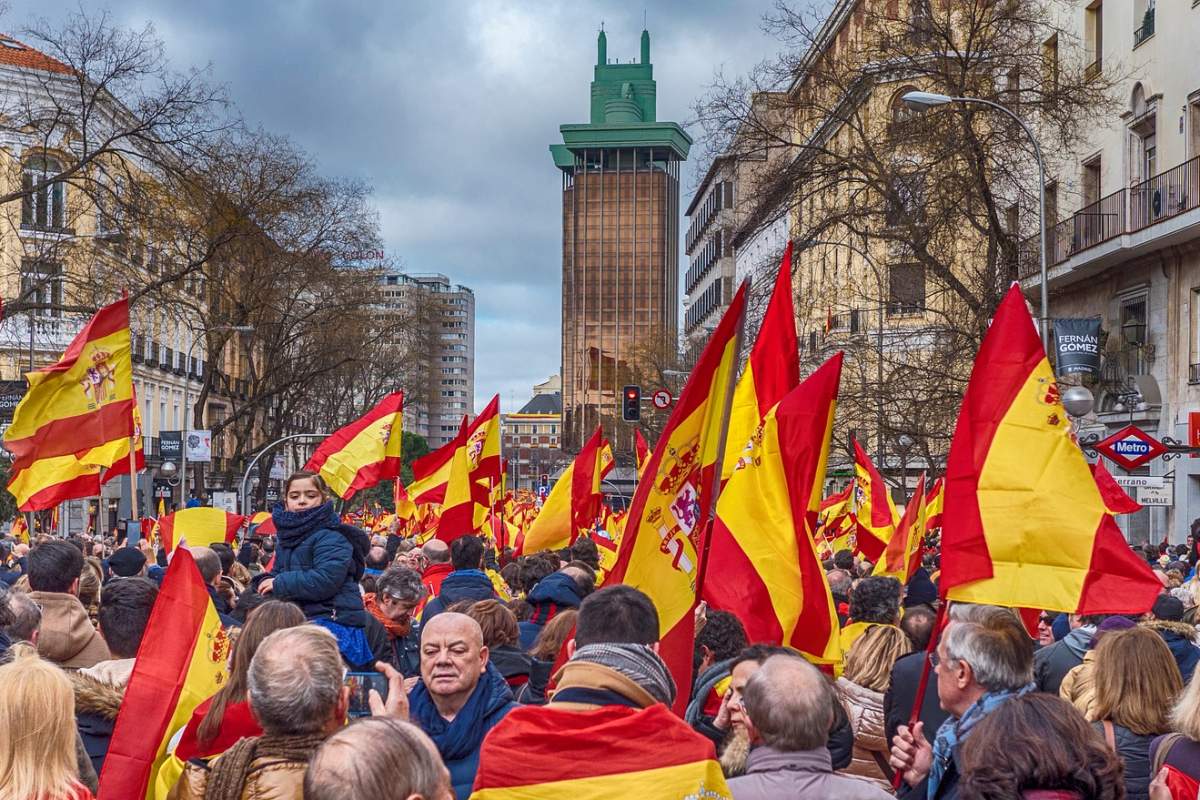18 Facts About Bullfighting in Spain (100% true)
Did you know that bullfighting exists since ancient times? Or that bullfighting is not only practiced in Spain, but also in 14 other countries in the world?
Learn more thanks to these 18 interesting facts about bullfighting in Spain! 🐂
The Best Spain Bullfighting Facts
You have probably heard of this very controversial tradition taking its roots in Spain. However, there are lots of things you don’t know about it, so let’s dive into it with these bullfighting in Spain facts.
1. Spanish bullfighting is very ancient
Though modern day Spanish bullfighting does not look like it used to when it first started, this tradition is very ancient. In Knossos, Crete, you can find paintings of both men and women acrobats fighting a bull, dating back to 1400 BC!
This very rough fight was then refined by the Moors, and it became a spectacle. Moors were sitting on their horses and killing the bulls.
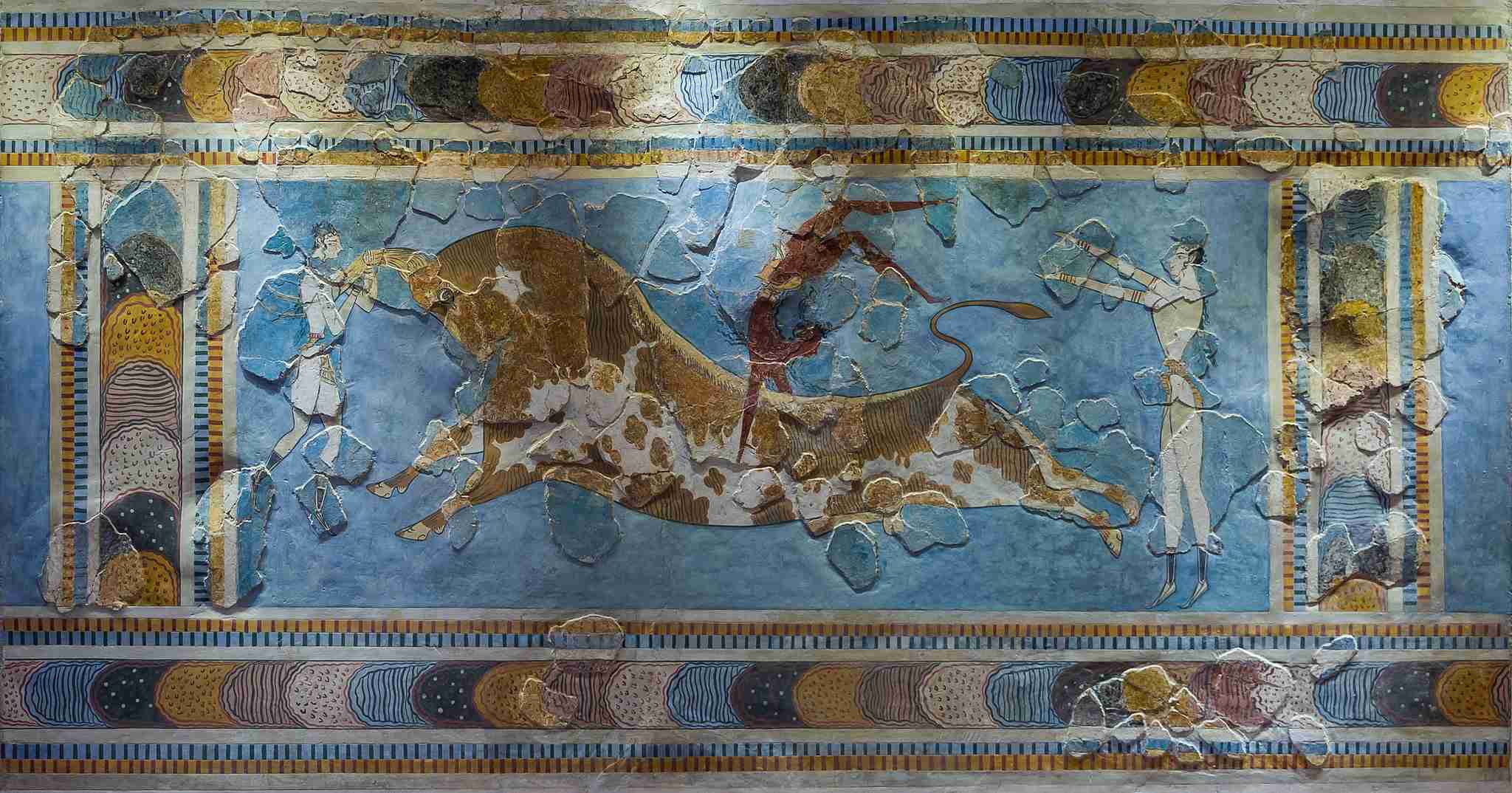
Heraklion Archaeological Museum / CC0 / Fresco in Crete, Greece
2. Bulls are specifically bred to fight
In case you were wondering, the “chosen ones” of bulls, fighting a torero in the arena are not just random ones. They are exclusively bred for fighting purposes and come from a specific breed, known for their aggressiveness. It is called the “Toro Bravo”, and they will always charge at a target. It turns out that “Toro Bravo” bulls were used in ancient Rome, for instance in the Colosseum.
Besides, if you meet other bulls in the Spanish countryside, don’t be afraid: it is very unlikely for them to attack you.
3. Not all bulls are killed in Spanish bullfighting
You might think of the common stereotype of a torero slowly but steadily stabbing a bull to death, but that does not always happen.
Instead, for some bulls, if they have displayed exemplary and courageous behavior in the arena, the president of the bullring can pardon them, they can be “indultado”. It happens when the crowd waves white handkerchiefs. Sometimes, the fight was so memorable that the bull is allowed to go back to its ranch and live there in peace.
4. The biggest bullring is not in Spain
Spain is very famous in terms of bullfighting. After all, it is where it all started, and the country exported this tradition to other continents such as South America. However, the biggest bullring is not located in Spain!
Instead, Plaza de Toros is the biggest one, and it is situated in Mexico City, Mexico. There are more than 41,000 seats and it is also used for some boxing matches.
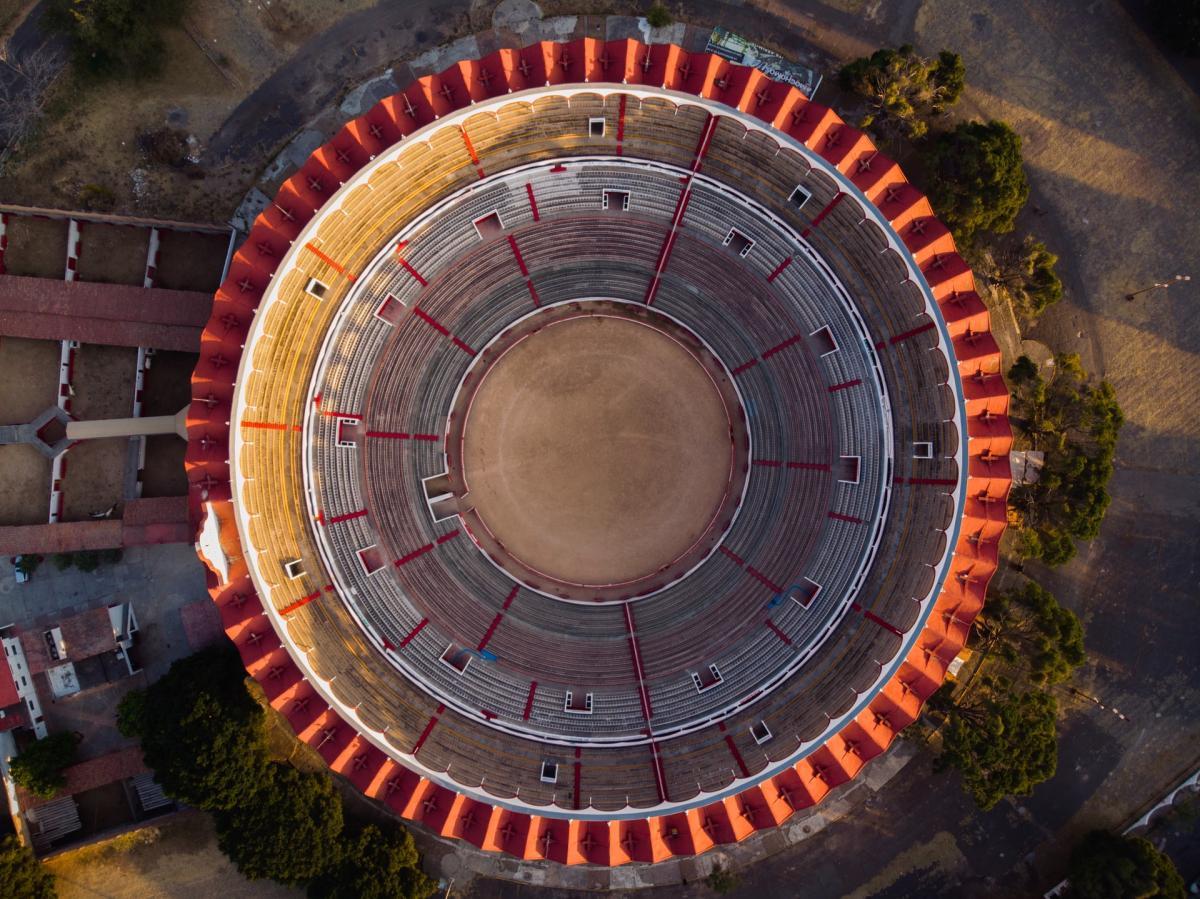
Plaza de Toros in Mexico
5. Bullfighting is not loved by everyone in Spain and is sometimes banned
When you think of the Spanish bullfighting controversy, you probably imagine a discussion between Spain defending its culture, and the rest of the world, defending animal rights. However, it is not actually how it is, because lots of Spaniards despise bullfighting.
Some regions have even completely banned it, like the Canary Islands and Catalonia (though the Spanish government overturned this one). Some cities like Barcelona have announced they are now officially anti-bullfighting.
6. There are three stages in Spanish bullfighting, each announced by a trumpet
Stages in a corrida are called “tercios”, and each new one is announced by the sound of a trumpet.
- The first one is “Tercio de Varas”, during which the bull enters the arena, is tested, and is stabbed with lances (“Varas”).
- The second one is “Tercio de Banderillas”, and sharp sticks are being stuck into the shoulders of the bull.
- The last one is “Tercio de Muerte”, during which the bullfighter carries a sword and a red cape, and kills the bull in a series of passes.
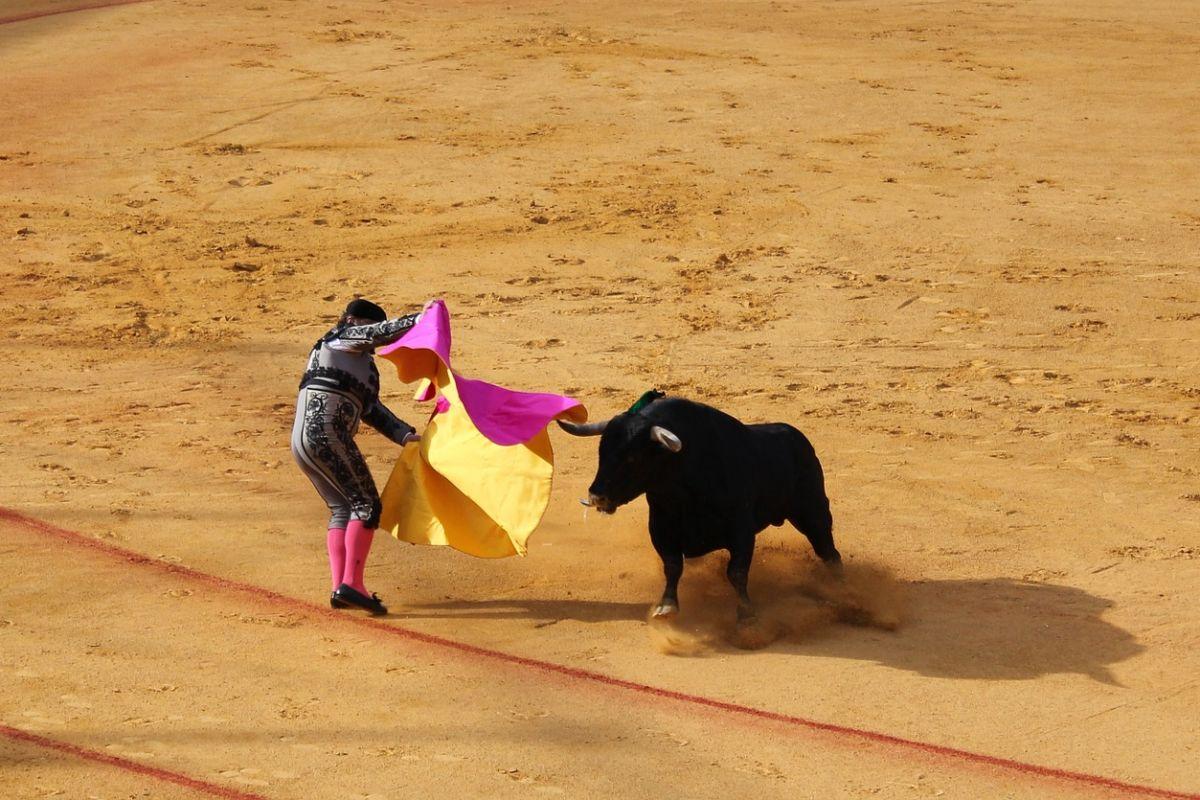
7. The biggest bullfighting ring in Spain is located in Madrid
Just because the biggest bullfighting is not in Spain does not mean there are no huge bullfighting arenas.
The “Las Ventas” bullring is located in Madrid. It is the biggest in Spain and a famous landmark in Madrid. On top of hosting bullfights, it is also home to a bullfighting museum. It opened in June 1931 and has almost 24,000 seats. There have also been concerts there, like AC/DC, The Beatles, and Radiohead.
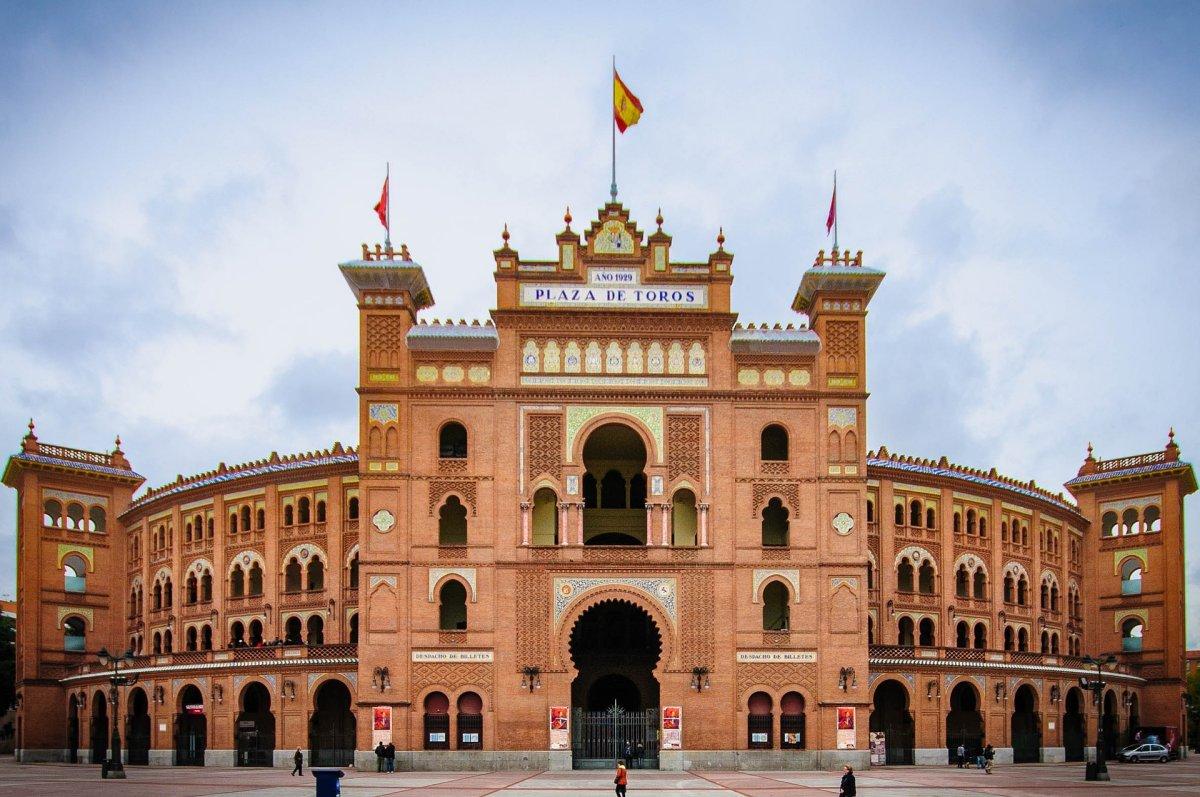
Las Ventas in Madrid
8. There are bullfighting schools for children in Spain
This is probably the fact that will shock you the most, but that is true. There are 15 bullfighting schools in Spain, and each of them teaches future matadors from the age of 14, by practicing first on fake bulls and later on calves.
These schools became very controversial lately, but the conservative Spanish government supports bullfighting, even wanting to make it optional in regular school.
9. You can find bullfighting bars in Spain
This might surprise you, and you could wonder what’s happening in there, but there are bullfighting bars in Spain. Fans gather there to watch either the recent fights or replays of the most famous ones.
Such bars are decorated with bullheads, matadors’ suits, and photos of historical bullfights. If you want to learn more about the practice and meet true fans, this is the place to go.
10. Female bullfighters exist, for over 100 years
You have probably never seen female bullfighters, mostly because bullfighting is strongly associated with masculinity. There have been some female bullfighters since the beginning of the 20th century.
Conchita Cintrón, a Chilean woman, is one of the most famous ones, and her career lasted from the 40s to the 60s. Another famous one is Cristina Sánchez. Female bullfighters are pictured in Pedro Almodóvar’s “Talk to Her”, in 2002.
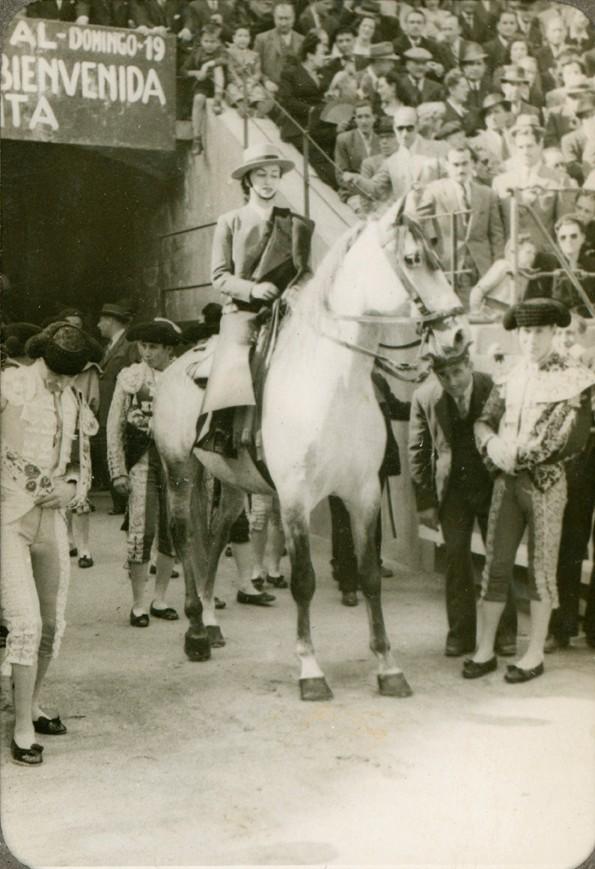
Mariano Carmelo Rodríguez Núñez / CC BY-SA / Conchita Cintron
And that’s it for the most general Spanish bullfighting facts, but keep reading, because I still have 8 more of them for you:
More Spanish Bullfighting Facts
Bullfighting is fascinating, important in both culture and history, and I still have lots of things to tell you about. Keep reading to learn more thanks to these facts about Spanish bullfighting.
11. More and more bullfighters are being killed
You know it, dancing around a bull, stabbing it and taunting it is very risky. This is why matadors are heavily trained.
Unfortunately, while that was very uncommon, bullfighter deaths are on the rise at the moment. In 2016, Victor Barrio was the first one to be killed in Spain in over 30 years. Two others were gored to death in 2017 and 2018. Since 1700, over 500 bullfighters have been killed, and injuries are still very common.
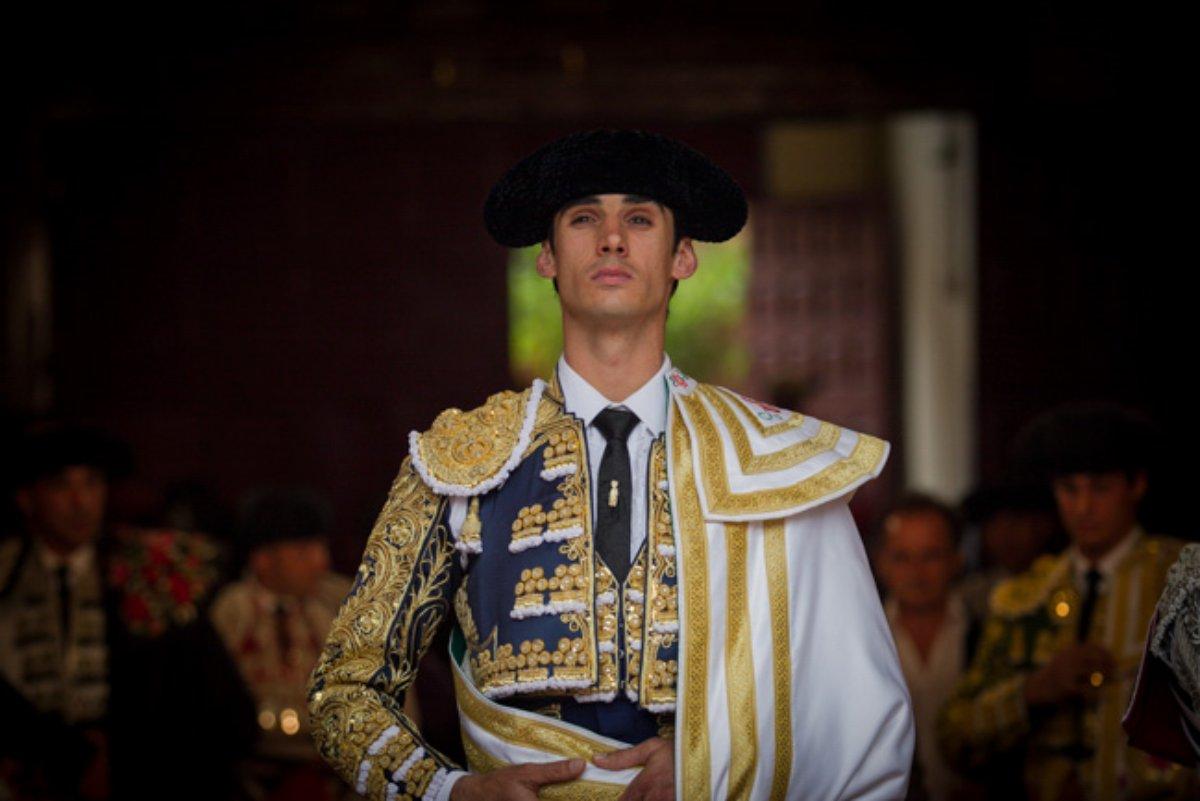
Juan Pelegrín / CC BY-NC-SA / Victor Barrio in 2015
12. Spanish bullfighting has never been so little supported
This old tradition is more and more subject to controversy, as you know it, but in recent times, it has reached an all-time low. While animal protection associations are voicing their concerns as frequently as possible, the support of bullfighting in Spain is decreasing rapidly.
In fact, a 2016 poll showed the majority of Spaniards don’t even like bullfighting, specifically in younger generations. 93 percent of 16-24 year-olds do not support this tradition.
13. Every bullfighter starts his or her career in Madrid
On top of being the biggest bullring in Spain, “Las Ventas” in Madrid hosts a very unique tradition for novice bullfighters: they have to kill their first bull there. On this day, they can display their talent to a lot of people, in the middle of the ring, in the most stressful possible situation.
After that, they can start their career and fight in any bullring of their choice, in the whole country.
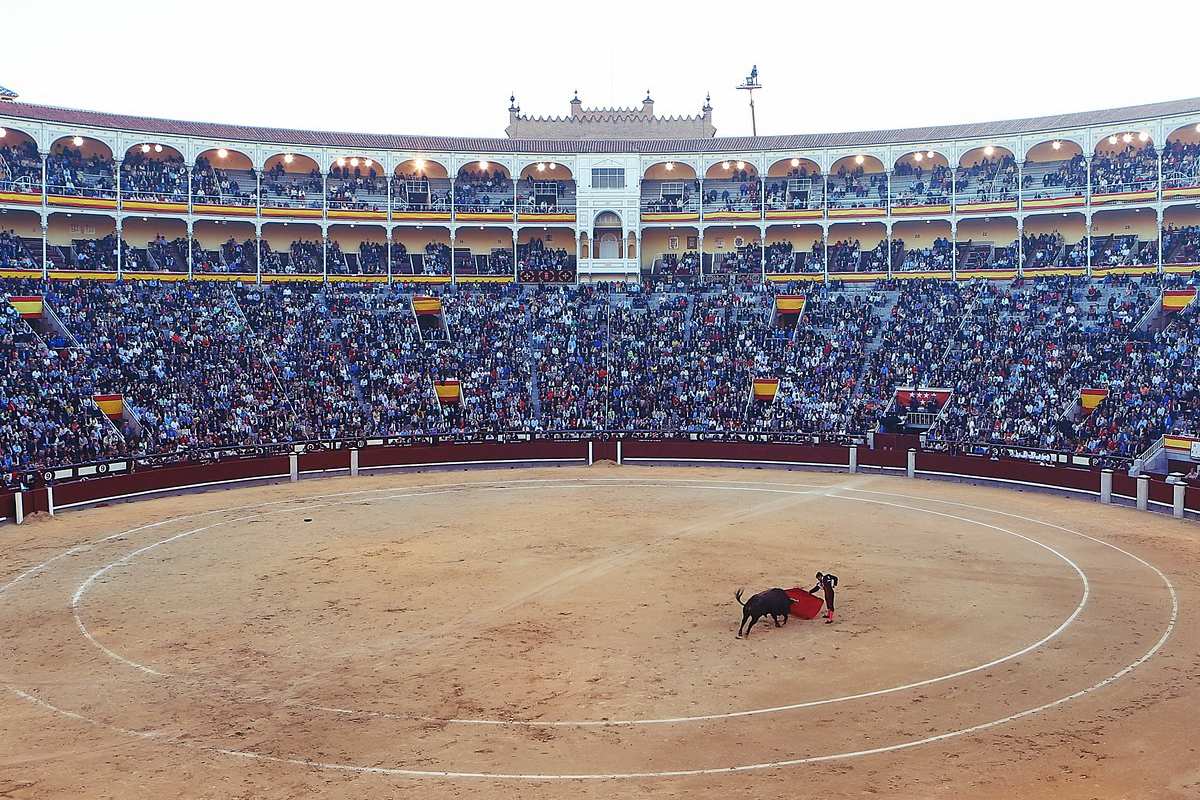
14. Around 250,000 bulls are killed every year because of bullfighting
Though not all bulls are killed after a bullfight, approximately a quarter of a million bulls are killed each year, because of bullfighting, worldwide! This is obviously the biggest reason to be against such a practice.
The arguments of the opposition are that because this tradition involves an animal, it cannot consent but still feel fear, stress and pain. This entertainment, dedicated to humans, is very brutal and seen as an abuse of power.
15. There is bullfighting in 14 countries, not only in Spain
Spain is the most important country in terms of bullfighting, you already know that. It first introduced the practice to the world and is to this day the most reputed one.
However, there are 13 other countries in the world that officially practice bullfighting, like the United States, Mexico, India, and France. The rules of bullfighting are different in each of them, and some countries ban the killing of animals.

Arena of Nimes in France
16. In Spain, bullfighting is not considered a sport
If you have seen what a corrida or bullfighting looks like, you can easily understand why it is considered by many as a sport. However, Spaniards see it as a tradition or a cultural event. This means that it is included in Spanish history, and it is seen as a ritual.
When it comes to corridas, there are rules and techniques for bullfighters to train, but Spanish people still do not consider it a sport.
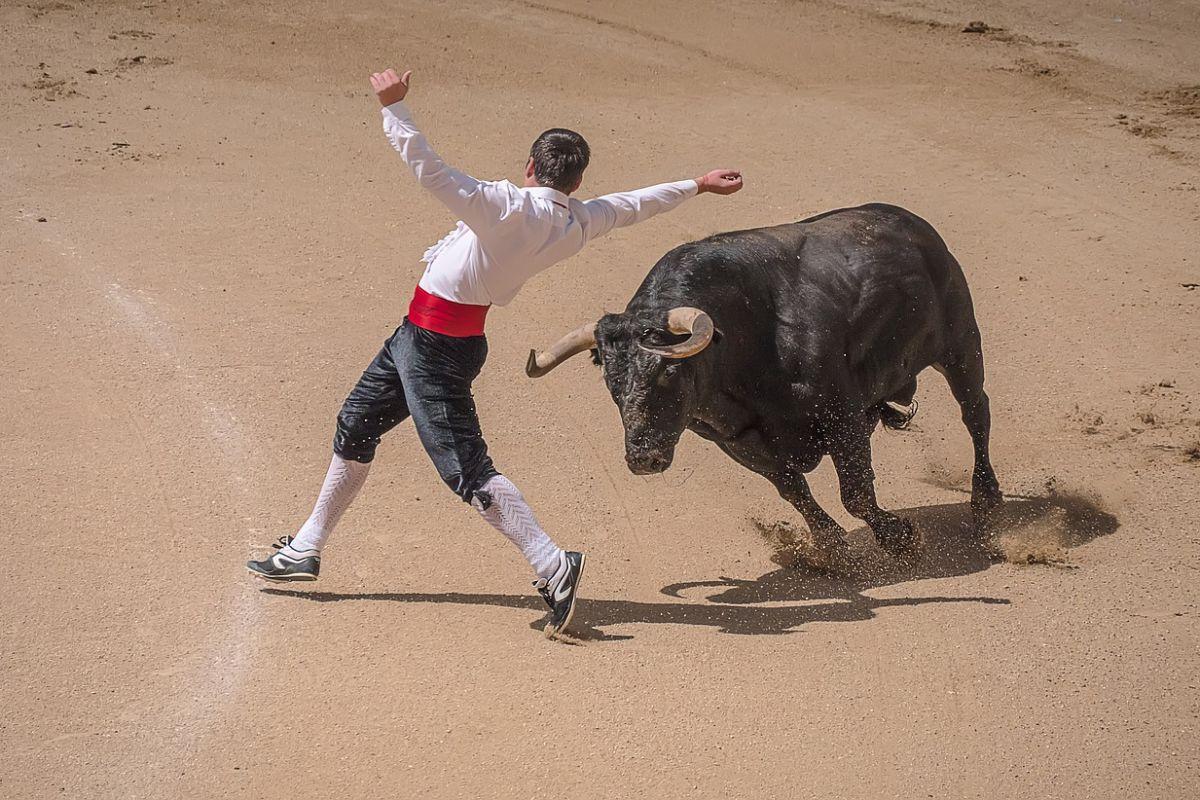
Read more: learn everything about sports in Spain
17. The modern day Spanish bullfighting dates back to the 18th century
Bullfighting originates from 2000 BC, but modern-day bullfighting is very different. It was actually introduced in Spain by Francisco Romero in 1726.
Romero is considering the founding father of bullfighting. He asked, very early in his career, to kill the bull himself at the end of the fight, for the first time in history. He introduced death by the sword to bullfighting and was the first genuine matador.
18. It is said that bulls are being handicapped before and during the fight
The last fact of today is about the bulls used in bullfighting. Because this practice is so risky, former matadors have said that bulls are actually handicapped both before and during the fight, to prevent them from harming anyone.
For instance, on the day of the fight, they are given tranquilizers and laxatives, as well as beatings to the kidneys. Plus, during weeks before the fight, they are also confined in darkness and have heavy weights hung around their neck.
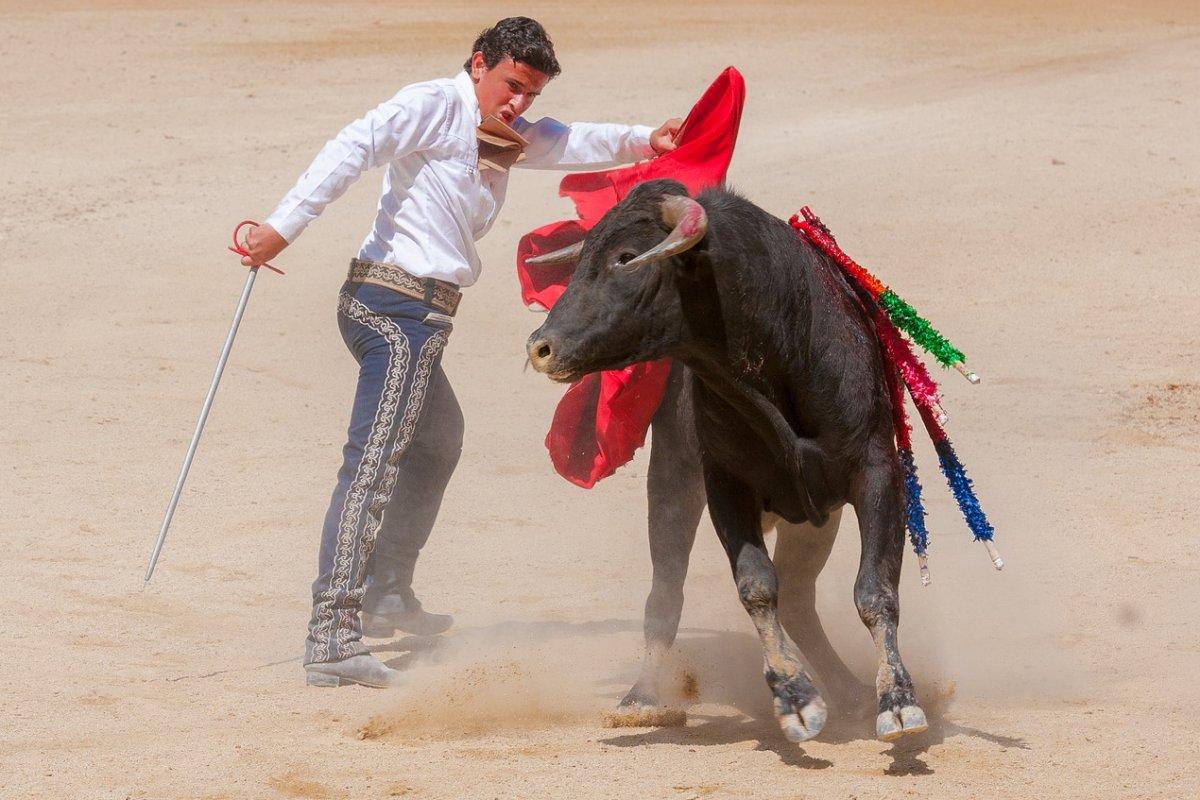
And that’s it for the 18 interesting facts about Spain bullfighting! I hope you enjoyed them and that you learned something. If you want to learn more about this country, feel free to keep reading for more facts:
More Facts!
Do you want even more facts about Spain?
Well, I have more facts about Spain, I’m sure you’ll love reading them!
Here’s the main guide of the best Spain facts 👉 All the Facts about Spain
Check out these facts by city/region:
- Facts about Madrid
- Facts about Catalonia
- Facts about Bilbao
- Facts about Barcelona
- Facts about Seville
- Facts about Malaga
- Facts about Granada
- Facts about Valencia
- Facts about Castilla la Mancha
Or these Spain facts by topic:
- Facts about Christmas in Spain
- Facts about la Semana Santa in Spain
- Facts about religion in Spain
- Facts about Spanish food
- Facts about the Spanish language
- Facts about schools in Spain
- Facts about sports in Spain
- Facts about music in Spain
Or click here to see ALL the facts up on the blog! Spoiler alert: there’s A LOT of them.
The Full List of 18 Spain Bullfighting Facts
- Spanish bullfighting is very ancient
- Bulls are specifically bred to fight
- Not all bulls are killed in Spanish bullfighting
- The biggest bullring is not in Spain
- Bullfighting is not loved by everyone in Spain and is sometimes banned
- There are three stages in Spanish bullfighting, each announced by a trumpet
- The biggest bullfighting ring in Spain is located in Madrid
- There are bullfighting schools for children in Spain
- You can find bullfighting bars in Spain
- Female bullfighters exist, for over 100 years
- More and more bullfighters are being killed
- Spanish bullfighting has never been so little supported
- Every bullfighter starts his or her career in Madrid
- Around 250,000 bulls are killed every year because of bullfighting
- There is bullfighting in 14 countries, not only in Spain
- In Spain, bullfighting is not considered a sport
- The modern day Spanish bullfighting dates back to the 18th century
- It is said that bulls are being handicapped before and during the fight
Share the knowledge! Click on the buttons below to share these facts with your friends, and help them learn more about the world 🙂

